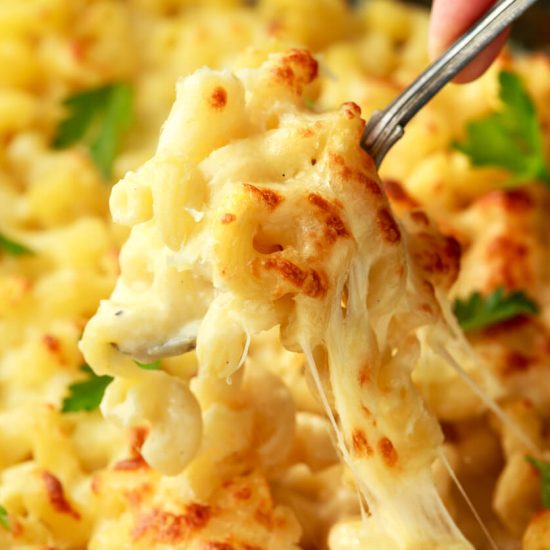Braised Beef Cheeks in Barolo Wine is a luxurious dish that marries rustic comfort with gourmet finesse. Slow-cooked to perfection, our beef cheeks become remarkably tender, absorbing the robust aromas of the prestigious Barolo wine, mingling with a bouquet of herbs and a hint of garlic. Served with a velvety sauce that’s been reduced to a glossy finish, this hearty entrée promises a dining experience that’s both deeply satisfying and elegantly complex. Our Braised Beef Cheeks in Barolo Wine await to enchant your palate, perfect for a special occasion or a sophisticated dinner.
Preparation:
Season the beef cheeks liberally with salt and pepper. Let them come to room temperature for about 30 minutes before cooking.
Searing the Beef:
In a large Dutch oven or heavy-bottomed pot, heat the olive oil over medium-high heat. Add the beef cheeks to the pot and sear them on both sides until they are well-browned, about 3-4 minutes per side. Remove the beef cheeks from the pot and set aside.
Sauté the Vegetables:
In the same pot, add the chopped onion, carrot, celery, and garlic. Sauté until the vegetables are softened and lightly browned, about 5-7 minutes.
Deglaze:
Pour in the Barolo wine to deglaze the pot, scraping up any browned bits from the bottom with a wooden spoon. Allow the wine to reduce by half, which will concentrate the flavors.
Braising:
Return the beef cheeks to the pot. Add the beef stock, tomato paste, bay leaf, thyme, and rosemary. Stir to combine.
Bring the mixture to a simmer, then cover the pot and reduce the heat to low. Let it braise gently for about 3-4 hours, or until the beef cheeks are tender enough to be easily pierced with a fork.
Finishing:
Once the beef cheeks are tender, carefully remove them from the sauce. Strain the sauce through a fine sieve, pressing on the solids to extract as much liquid as possible. Discard the solids.
Return the sauce to the pot and simmer until it has thickened to your liking. Adjust seasoning with salt and pepper.
Return the beef cheeks to the sauce and warm through.
Ingredients
Directions
Preparation:
Season the beef cheeks liberally with salt and pepper. Let them come to room temperature for about 30 minutes before cooking.
Searing the Beef:
In a large Dutch oven or heavy-bottomed pot, heat the olive oil over medium-high heat. Add the beef cheeks to the pot and sear them on both sides until they are well-browned, about 3-4 minutes per side. Remove the beef cheeks from the pot and set aside.
Sauté the Vegetables:
In the same pot, add the chopped onion, carrot, celery, and garlic. Sauté until the vegetables are softened and lightly browned, about 5-7 minutes.
Deglaze:
Pour in the Barolo wine to deglaze the pot, scraping up any browned bits from the bottom with a wooden spoon. Allow the wine to reduce by half, which will concentrate the flavors.
Braising:
Return the beef cheeks to the pot. Add the beef stock, tomato paste, bay leaf, thyme, and rosemary. Stir to combine.
Bring the mixture to a simmer, then cover the pot and reduce the heat to low. Let it braise gently for about 3-4 hours, or until the beef cheeks are tender enough to be easily pierced with a fork.
Finishing:
Once the beef cheeks are tender, carefully remove them from the sauce. Strain the sauce through a fine sieve, pressing on the solids to extract as much liquid as possible. Discard the solids.
Return the sauce to the pot and simmer until it has thickened to your liking. Adjust seasoning with salt and pepper.
Return the beef cheeks to the sauce and warm through.
Notes
Perfect Wine Pairing:
To accompany this dish, a glass of Barolo, the same wine used in the recipe, is ideal. Barolo’s high tannins and acidity cut through the richness of the beef, while its complex notes of rose, cherry, and truffle echo the deep flavors developed during the slow braising process. If Barolo is unavailable, a full-bodied Nebbiolo or a rich, structured Merlot can complement the dish beautifully.




